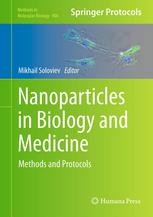

Most ebook files are in PDF format, so you can easily read them using various software such as Foxit Reader or directly on the Google Chrome browser.
Some ebook files are released by publishers in other formats such as .awz, .mobi, .epub, .fb2, etc. You may need to install specific software to read these formats on mobile/PC, such as Calibre.
Please read the tutorial at this link. https://ebooknice.com/page/post?id=faq
We offer FREE conversion to the popular formats you request; however, this may take some time. Therefore, right after payment, please email us, and we will try to provide the service as quickly as possible.
For some exceptional file formats or broken links (if any), please refrain from opening any disputes. Instead, email us first, and we will try to assist within a maximum of 6 hours.
EbookNice Team

Status:
Available4.4
33 reviewsThe modern fascination with micro- and nano-sized materials can actually be traced back further to the 1960s and ‘70s when the first few reported attempts were made to use nanoparticles for controlled drug delivery. In Nanoparticles in Biology and Medicine: Methods and Protocols, experts in the field present a wide range of methods for synthesis, surface modification, characterization, and application of nano-sized materials (nanoparticles) in life science and medical fields, mostly for drug delivery. The methods presented cover all stages of nanoparticle manufacturing, modification, analysis, and applications. Written in the highly successful Methods in MolecularBiology™ series format, chapters include introductions to their respective topics, lists of the necessary materials and reagents, step-by-step, readily reproducible laboratory protocols, and tips on troubleshooting and avoiding known pitfalls.
Comprehensive and cutting-edge, Nanoparticles in Biology and Medicine: Methods and Protocols will help the beginner become familiar with this fascinating field and will provide scientists at all levels of expertise with easy-to-follow practical advice needed to make, modify, and analyze nanoparticles of their choice and to use them in a wide range of biomedical and pharmaceutical applications, including functional protein studies, drug delivery, immunochemistry, imaging, and many others.